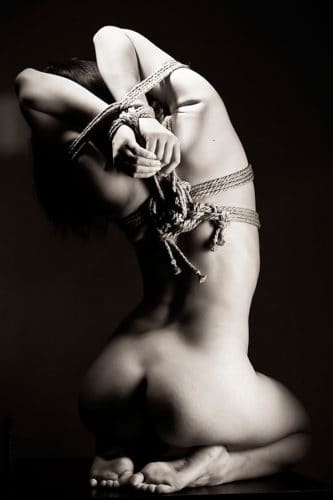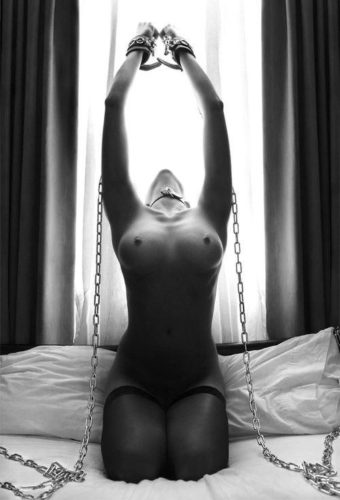Differences between Shibari and Bondage 
Some associate BDSM with cruelty and violence in sex. Mostly this is true, but it is only the tip of the iceberg in a world completely opposite to the one in which we all exist. In a nutshell, BDSM is a subculture based on psychological emancipation through sexual pleasure, where one person (top, master) dominated the other (bottom, submissive). Exchange of power between the partners – it is the core of the culture. The two fundamental elements of this subculture are shibari and bondage. There are some differences, although not all BDSM practitioners know this if we’re talking about newbies’. We will tell you about the most important of them.
So let’s start with the “terminology”: Shibari – the Japanese art of erotic bonding, came from the martial art of capturing the defeated enemy (more about it you can read here). Bondage – to some extent deprivation of mobility and freedom. For the purpose of obtaining moral, sexual, and sometimes aesthetic pleasure. From the definitions, you, probably, already see the difference, but let’s continue with more specific points.
 Freedom of action
Freedom of action
Shibari – Can be limited or not limited at all. Some types of strapping can be wear under clothes for hours
Bondage – The complete restriction is necessary – is the essence of the practice
Functionality
Shibari – Someone uses shibari as punishment or as a promotion. And, of course, shibari can be used in a session to deprive the freedom of action.
Bondage – It is used mainly for fixation and restricts any actions. Aesthetic beauty is secondary.

Painfulness
Shibari – Doesn’t cause pain if everything is done right. Ropes should not over-tighten anywhere, no any knots.
Bondage – Can cause some pain – but only within the safety limits, if this pain is the target of the session
Empathy
Shibari – Long and thoughtful process. The rope must lie flat, each “step” is a separate line. Emotion in shibari is almost the most important thing
Bondage – Emotions have an important role in bondage but, in most cases, are just part of role-playing games
 Concentration
Concentration
Shibari – It takes a lot of effort to stand still without move during the process if you are bottom. Master must concentrate on each step
Bondage – Less important, is often part of the resistance games
Time
Shibari – The good strapping will take at least half an hour.
Bondage – It’s not always the same. A few seconds for handcuffs and much longer to mummification

So, as a conclusion, we can say: the aesthetic attitude of the bound person is an important component of shibari which distinguished by using special forms and aesthetic instructions. Sometimes masters intentionally create asymmetric and uncomfortable positions, often giving a choice of two “evils” to enhance the psychological impact. The art is based on the skillful use of the rope and the delivery of pleasure more from the “journey” itself than from the “destination”.
In comparison with shibari bondage does not look so spectacular. The main point is the same, but more simple technology. If the shibari requires external aesthetics, the ability to bind, preparation for the process, then in bondage you just need to immobilize (It also often involves pain).
Shibari is the art of weaving rope and does not imply humiliation. Is performed with reverence and respect and no knots (which means slavery and obedience).
Unlike shibari, bondage is slavish dependence. It implies the dominance of one partner over another and the humiliation of the latter. Fixation in any accessible way (shackles, cuffs, scotch tape and so on). Bondage is functional, beauty is not necessary.


Awesome post. tnx